The Definitive Telefunken M80 Review
Does this classic looking stage mic sound as good as it looks?
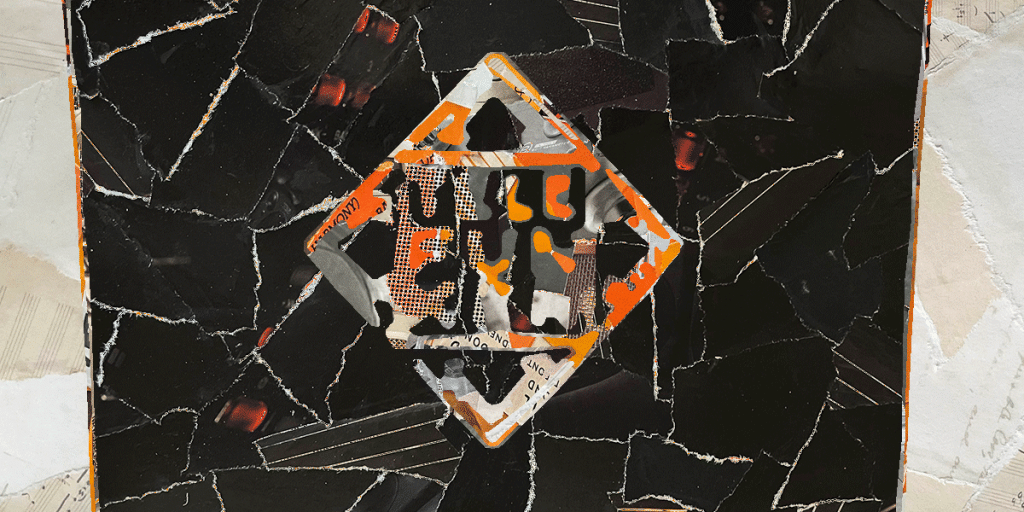
Reviewed by: Paul Narang
Review date: October 2022
Current price: Around $250
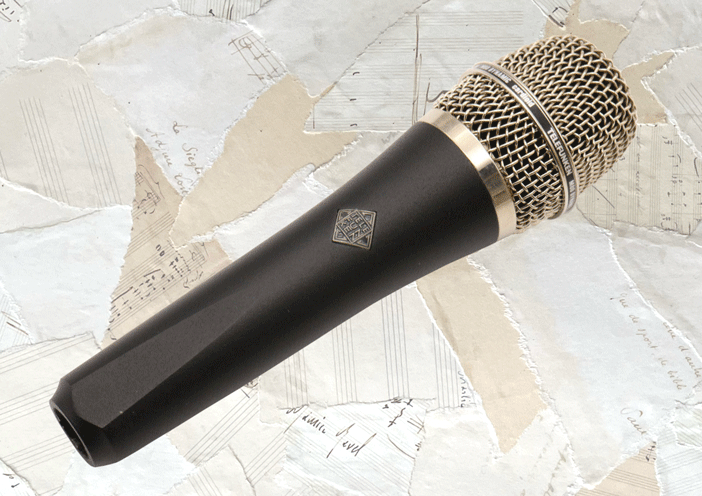

Telefunken M80 Microphone Review
| Pros: | Cons: |
| Bright, clear sound Extended high frequency range Excellent feedback and noise rejection Sturdy build quality | Pricey Sensitive to plosives |
Telefunken M80 Review
A mid-range handheld vocal mic with a bright, open sound. Its wide frequency range makes this a great addition to any studio, but this mic really comes alive in a gig setting.
With a robust build quality and a sparkling high-end this dynamic supercardioid mic is a favourite for lead vocals and snare drums, and a perfect companion on the road.
What is it?
With its iconic diamond logo, the Telefunken company’s been making cutting-edge, high-quality microphones since the year 2000.
The M80 is no exception – it’s a true upmarket alternative to the industry-standard SM58. Favoured by rock singers and studio engineers alike, this mic is known for its clarity and durability.
It boasts a tight, supercardioid pickup pattern which reduces unwanted noise from the sides. A bright sound and wide frequency range gives it condenser-like qualities – impressive for a dynamic mic!
The M80 also comes in a shorter ‘low-profile’ version (M80-SH), and a wireless capsule version (M80-WH).
Also in the Telefunken Dynamic series
- Telefunken M81 – a similar model to the M80, with a slightly less bright EQ curve. Great for backing vox, guitars and other instruments.
- Telefunken M82 – a large diaphragm version with a beefy low-end: ideal for kick-drums.
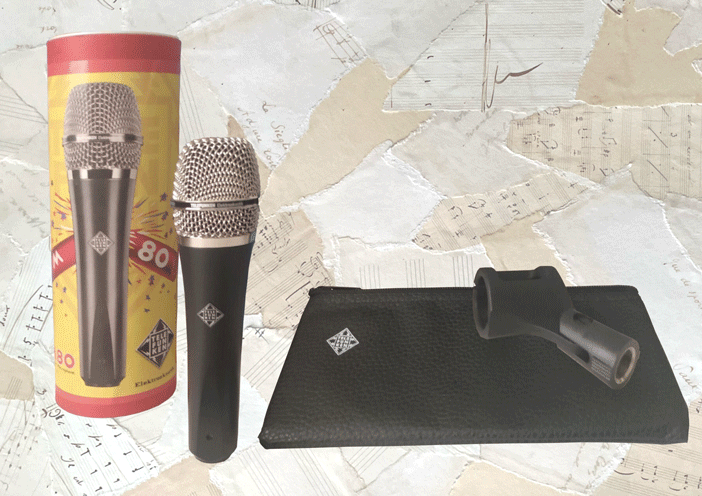
In the box
The M80 comes in a funky red and yellow tube, which also contains:
- A zipper bag
- A M780 mic clip
- Documentation
Dynamic vs condenser microphone
The Telefunken M80 is a ‘dynamic’ mic, making it particularly suitable for live use. Dynamic microphones differ to ‘condenser’ microphones in the following ways:
- They’re less sensitive (suitable for loud sounds)
- They’re less prone to feedback on stage
- They’re more rugged and durable for live use
- They’re cheaper
- There’s no need for batteries or phantom power
Dynamic mics in the home recording studio
Although dynamic mics are regularly used in live performance, they also have a unique place in the studio. The lack of sensitivity might sound like a drawback, but it can also work to your advantage.
A dynamic microphone, particularly one with a cardioid pattern, will pick up less of a poor sounding room, street sounds, or distant traffic rumble. It’s also the ideal choice for loud instruments such as drums and brass.
They also have their own tone, and can be used to tame shrill sounding instruments, or to add darkness and grit to overly bright vocals.
Telefunken M80 Polar pattern
The Telefunken M80 dynamic vocal mic has a supercardioid pickup pattern, which is tighter than the more common heart-shaped, cardioid polar pattern. It picks up a band of sound from the front, as well as a narrower band from the back. Sound is rejected from the back and sides.
This makes it ideal for use on stage, where you can really isolate the vocals from other noisy instruments, and minimise feedback. It’s also great for the studio when you have 2 or more singers or instrumentalists recording at the same time.
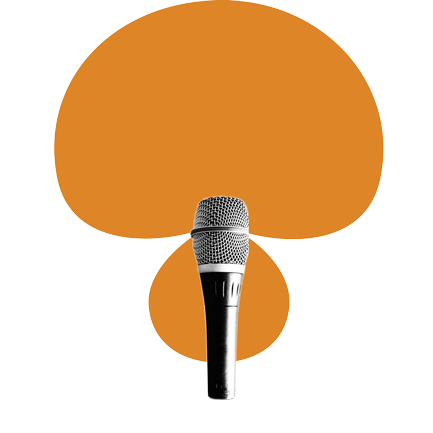
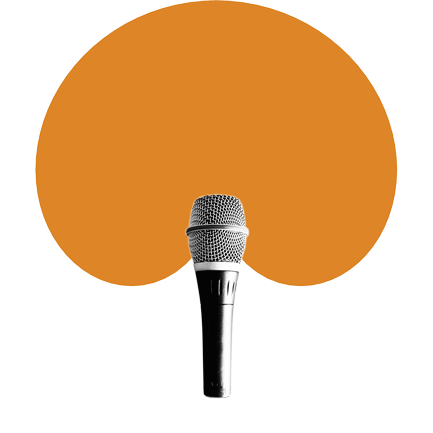
A standard cardioid pattern is ideal for a home studio where the acoustics of the room are less than ideal. It picks up the sound of the vocalist in front of the mic, while rejecting most of the reflections coming from the room.
This is emphasised even more with a supercardioid like the M80. And being a dynamic mic, it will pick up less of those distant sounds, like traffic rumble or noisy neighbours.
A note of caution – a mic with a super-cardioid polar pattern also picks up a small amount of sound from behind. So it’s important to be aware of what’s directly behind you.
No on/off switch on the Telefunken M80?
There’s no on/off switch on the M80 or on any of the Telefunken dynamic range.
Pro-level mics often don’t have on/off switches, because it make it less likely that the singer will accidentally turn off the mic mid performance. The sound engineer will normally mute the mic from the mixing desk when needed.
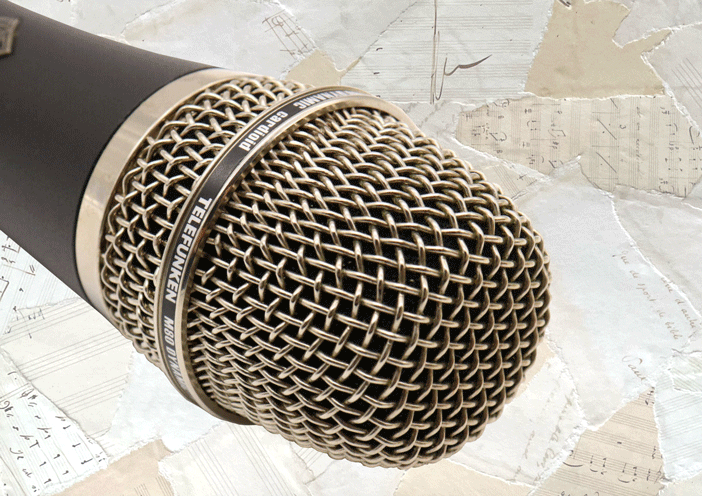
Phantom power for the Telefunken M80?
The M80 is a dynamic mic, which means it doesn’t require any form of external power. There’s no need for batteries, or ‘phantom power’ from the audio interface or mixer. This makes it a much simpler option than a condenser mic – you can simply plug and play.
Connecting the Telefunken M80
The M80 uses an XLR cable to connect directly to an audio interface or mixer. XLR are the standard connectors on all professional studio equipment. They’re ‘balanced’, which means the cables are shielded from interference and carry a higher signal than unbalanced cables.
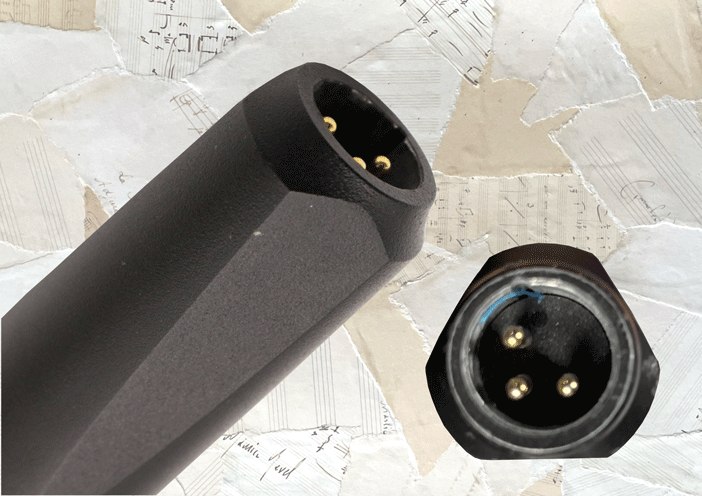
If your audio interface or mixer has 1/4″ jack inputs, you’ll need a cable with an XLR connector on one end, and a 1/4″ jack on the other, like this. Keeping cable lengths to a minimum is good practice to maintain the best signal.
The Telefunken M80 Design and Build
The first thing you notice when you hold the Telefunken M80 is how sturdy it feels. This thing is made in the USA, and built like a tank. It has a nice weight in your hands and a sturdy metal grill covers the diaphragm.
The mic has a sleek minimal design, with a black-powder finish on the handle which gives the mic a satisfying ergonomic feel. Flat tapered edges towards the base means it won’t roll away in a hurry if you place it down on a table.
Inside, the M80 boasts an ultra-thin diaphragm and a specially designed low-mass capsule which reduces the proximity effect. This means a singer can get up close to the mic without causing too much low-range muddiness. Together this adds up to an incredibly detailed and responsive microphone.
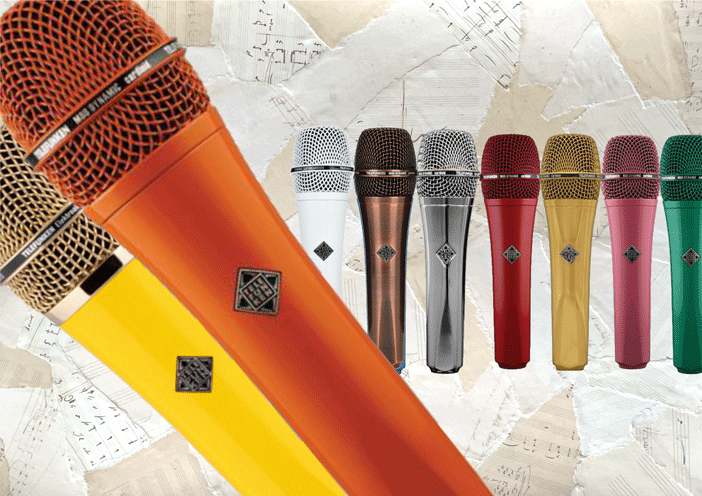
The M80 is also available in a custom range of colours, including: white, oak, cherry, copper and red. If you want the classic look then there’s the sleek matte black. Or if you’re feeling glamorous (and rich!), there’s always the gold finish.
The diamond logo is embossed in metal on the chassis, giving the mic a bit of classic, retro class.
If you register any product with Telefunken, the warranty covers one year for parts and labour on the capsule and tube, and four years for the amplifier and power supply.
Telefunken M80 Dimensions and Weight
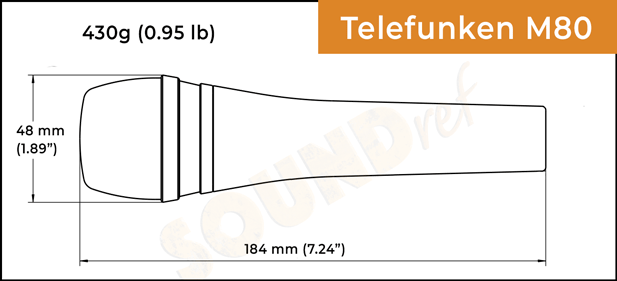
Weighing in at 430g, the M80 is a little heavier than other mics in its class (e.g. the SM58 is just under 300g). It’s also a little longer at 184mm in length compared to the SM58’s 162mm.
But this extra size and weight shouldn’t put you off. It feels sturdy to hold in a way that inspires confidence, and a few extra millimetres in length is a small price to pay for the right sound.
Telefunken M80 Frequency response
Ranging from 50 Hz – 18 kHz, the M80 boasts a wide frequency range when compared to other similar hand-held dynamic mics. This is considerably higher than the range of the Shure SM58 which only goes up to 15 kHz. This extended top-end gives vocals a sparkly, airy quality.
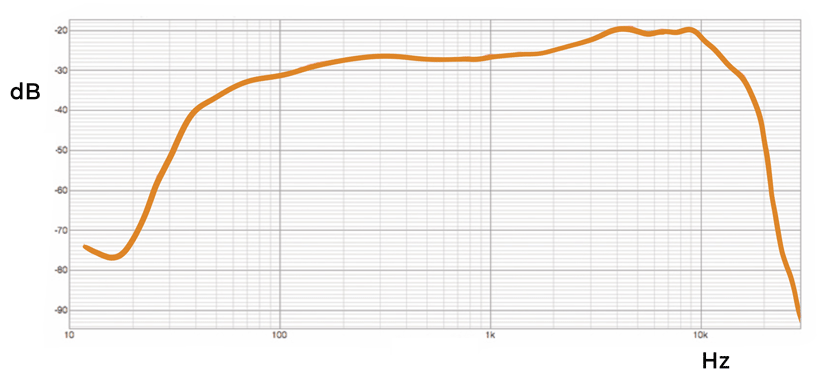
The response is fairly flat when compared to other mics, with no sharp peaks or troughs. A gentle roll-off of the low end helps combat any muddiness. There is a notable boost to the high-mids between about 4 and 10 kHz which further adds to a bright, clear sound and will allow the mic to cut through the mix.
Telefunken M80 Sensitivity and Impedance
The M80 has a tight supercardioid polar pattern, which does a good job of rejecting feedback noise and stage bleed. A high maximum sound pressure level of 135db means that even the most raucous rock singer is unlikely to face issues with distortion. The mic is also sensitive enough to bring out the detail of more subtle performances.
Like many dynamic mics, the M80 has a relatively low impedance of 325 ohms, however one special feature of this microphone is a ‘custom-wound impedance matching transformer’ – this helps provide a more even-levelled output, and clarity in the low range.
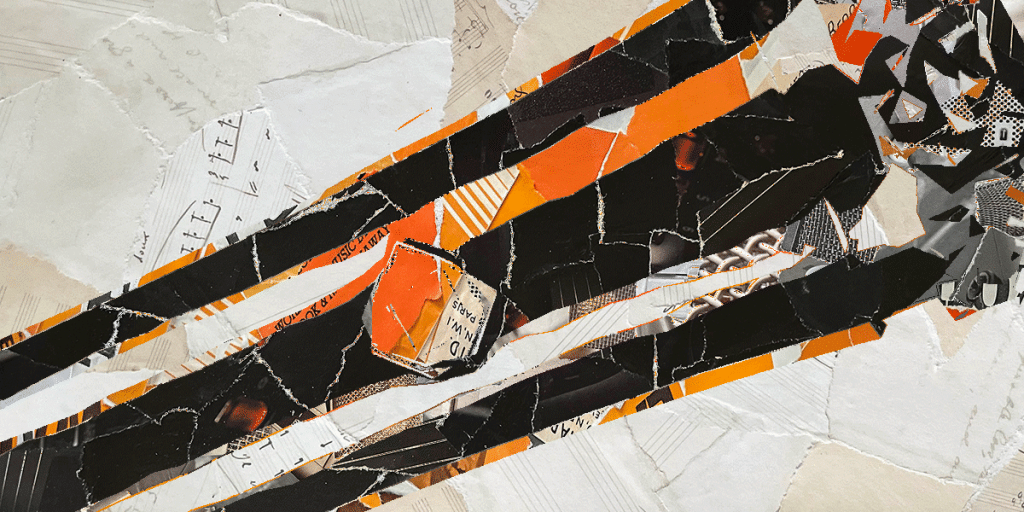
Telefunken M80 Sound quality
I’ve often found the sound of most standard dynamic stage mics to be a little dull and muffled. This is most obvious when trying to balance vocals with a live band: it can be a struggle to get them to cut through.
What strikes me about the sound of the M80 is its sparkle, clarity and openness. Despite being a dynamic mic, it has what can only be described as a condenser-like sound, due to the extended high end. This makes the mic particularly suited to lead vocals.
As well as vocals, this mic is a great choice for getting that extra ‘snap’ when miking up a snare drum. It also does a good job of capturing the shimmer of acoustic guitars in the studio.
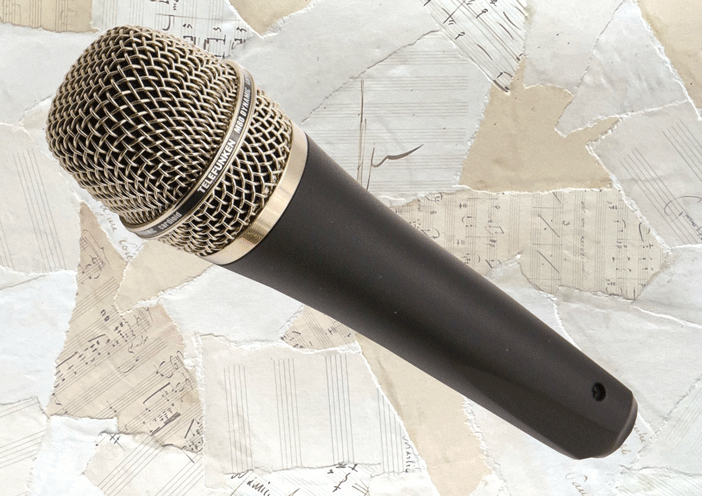
Telefunken M80 in Performance
There’s lots of reasons why the M80 is a great choice for live performance. Whilst many industry-standard mics are cardioid (such as the SM58), the M80 has a super-cardioid pattern.
This is great at rejecting feedback and stage noise, which is a must when using wedge-monitors. It can also reduce bleed from other instruments which can be annoying for in-ear monitors.
One thing to keep in mind is that a cardioid pickup pattern will pick up a small amount of noise from the rear of the mic, but this is fairly minimal with the M80.
A gentle roll-off of the low end from 200Hz does a good job of counteracting the proximity effect. This means you can sing right next to the grill without worrying too much about sound quality.
That said, the mic is rich and detailed in the low end even from a few inches away.
Like many handheld mics, it can be a little sensitive to plosives. However, this won’t be too obvious in live performance, and it’s easily remedied with a pop-shield in the studio.
Telefunken M80 vs M81
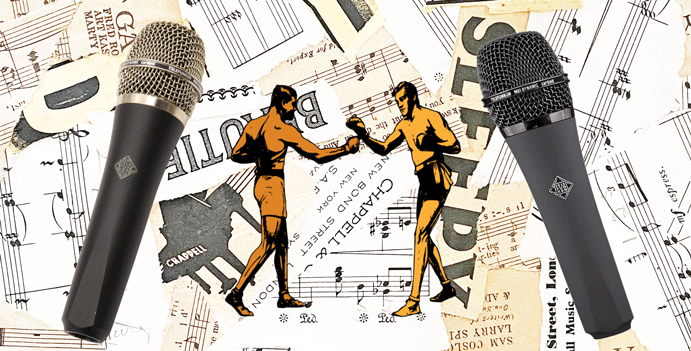
The mic most similar to the M80 in the Telefunken range is the M81. At first glance there isn’t much difference between the two, however the M81 has a slight variation in the frequency response.
The M81 is a stronger boost in the mid-range, and is generally flatter through the high-mids. The result is a sound which is a little darker and more rounded than the M80.
The M81 is very well suited to backing vox, horns, electric guitars and percussion. But everyone’s voice is different and some lead-singers with brighter or more nasal tones may prefer the M81.
Ultimately this comes down to personal preference. But with similar internal construction to the M80, the M81 is still a solid and trustworthy mic.
Telefunken M80 vs Shure SM58
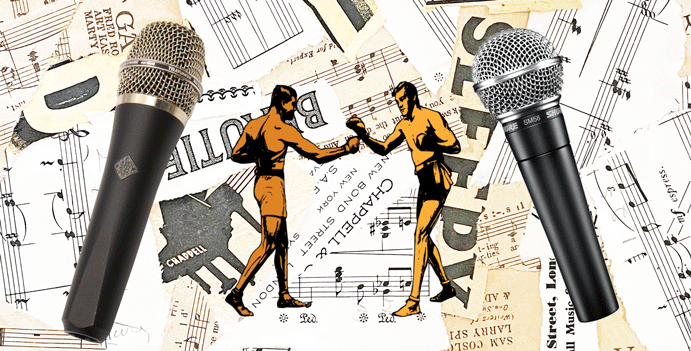
The Shure SM58, is an absolute bedrock of the live-music industry. Its reliable build quality, and affordable price has led to wide-spread use. It’s such an industry standard that many of us will have used one, and almost all of us will have heard one.
So why bother with the Telefunken M80 when it goes for over twice the price of the SM58? Because the M80 is a more upmarket microphone, with some distinct advantages.
The specially designed low-mass capsule, and reduced low-frequency curve of the M80 means that the low frequencies are more dynamic and less overpowering. It also deals better with the proximity effect, keeping those low notes nice and clean.
The super-cardioid pattern also means the M80 is more directional, with better feedback rejection.
And finally there’s the extended and boosted high-end. This provides that much needed air and sparkle to the voice when compared to the SM58.
Ultimately if you can stretch your budget, then the M80 might be worthwhile for a brighter, clearer sound.
Telefunken M80 vs Shure Beta 58A
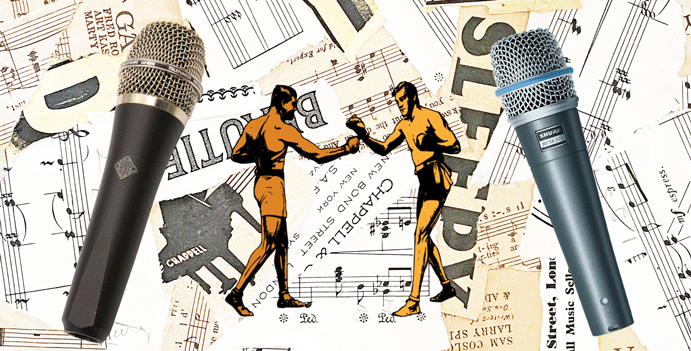
The Shure Beta 58A was designed as an upgrade to the industry-standard SM58, with an extended high frequency range. It has a lot of similarities to the Telefunken M80.
Both the M80 and Beta 58A utilise super-cardioid pickup patterns, rejecting sound from the sides. They both also capture a lot of those high end frequencies, necessary for detail and clarity in the voice.
Internally they have different circuitry, each with its own advantage. The Beta 58A has a pneumatic shock mount to reduce handling noise, and a humbucker coil which reduces hum and interference. Whereas the M80 has an ultra-thin diaphragm and a special low-mass capsule, which enhances sonic detail and reduces the proximity effect.
Both mics follow a similar frequency response, with flat mids, and a nice boost around 4 kHz. But it’s in the high end that we see a difference. The M80 is reasonably flat, before tailing off at 9kHz. But the Beta 58A has a distinctive dip at around 6kHz, creating two distinct peaks.
One major difference between the two mics is the total frequency range. While the Shure Beta 58A extends up to an impressive 16 kHz, the Telefunken M80 goes way beyond, reaching 18 kHz. That’s higher than the hearing range of most adults!
On first impressions the two mics look quite similar. But look a little closer and you’ll spot the subtle retro styling on the M80. The bevelled sides and raised diamond icon make the M80 the more stylish option in my opinion.
They’re both very durable, with the M80 being slightly larger and heavier.
So is the Telefunken M80 worth the extra money?
There aren’t huge differences between the two, so if you’re on a budget then the Shure Beta 58A could well be the mic for you. But if you can stretch a little further, the Telefunken M80 will give your vocals that extra air and sparkle that will clearly give you the edge.
Holding the Telefunken M80
Where you hold the microphone in relation to your mouth can make a big difference in sound. Professional vocalists are always repositioning their mics to change the tone and add expression to their performance.
Always hold the vocal mic by the main body, and if there’s too much sibilance, try holding it slightly to the side.
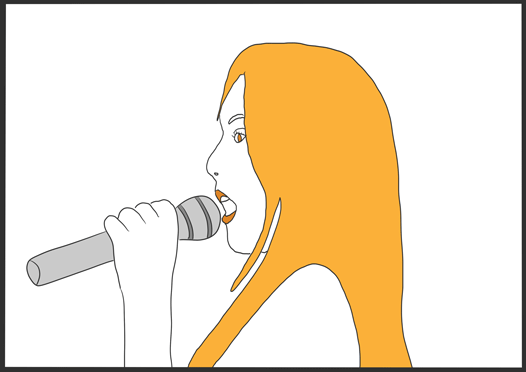
When you have other instruments in close proximity and you just want the sound of the voice, it’s best to sing or speak directly into the mic. This will add more bass to the sound, due to the ‘proximity effect’. It’s an effect used by radio presenters to give them very deep voices.
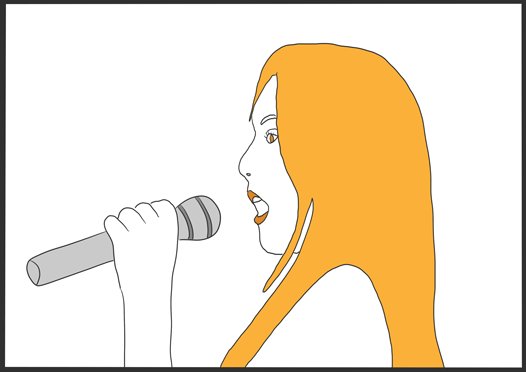
For a more natural, balanced sound, hold the mic between 5 and 10 cm away from your mouth. There’ll be less of the proximity effect, and the mic will pick up more sounds from other instruments, and the acoustics of the room.
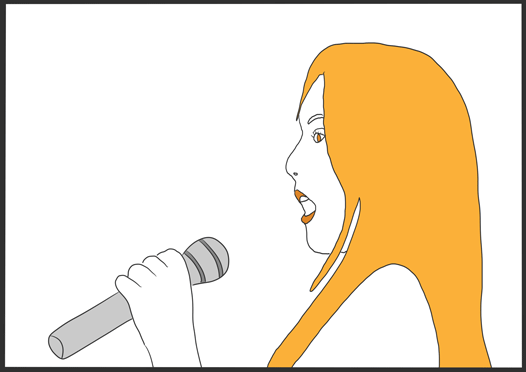
To bring in more of the room sound, and the instruments around you, hold the mic 10 cm or more away from your mouth. This is also a good position for any sudden loud notes, or to shape, and tail off a long note.
What else do you need?
With any vocal microphone, you’ll need:
- Microphone stand
Mic stands reduce any handling noise in the studio. Try a good quality boom stand, with a tripod base like the K&M 210/2
- XLR cable
If you want the best quality XLR cables, try these. Go for the shorter lengths where possible.
- Pop shield
This is to stop little bursts of air causing bassy pops on your studio recordings. You can easily make one of these out of stockings, or buy one here.
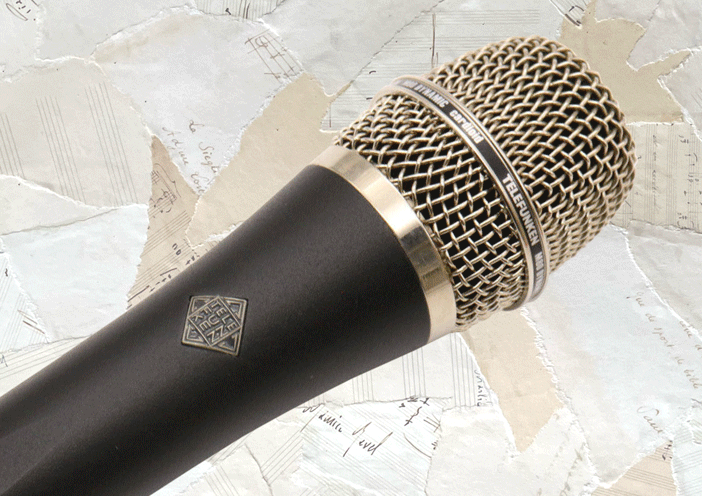
Conclusion
The Telefunken M80 is a classy, high-quality supercardioid dynamic mic. It offers a bright, clear, and detailed sound, similar to a condenser mic. This makes it a natural choice for the stage, where it can cut through the busiest mix, while minimising feedback and noise. It’s super sturdy too, well up to the rigours of touring and live use.
The M80 is a versatile mic, suiting a range of voices from raucous rock singers, to intimate folk performances. And its open, airy condenser-like sound makes it a solid mic to have on hand in the studio.
Telefunken M80 Frequently Asked Questions
Where is the Telefunken M80 made
The M80 is hand assembled in the USA
What does the German word ‘Telefunken’ mean?
Telefunken was originally a German company founded in Berlin in 1903. They specialised in supplying equipment for radio and TV.
Who uses the Telefunken M80?
The Telefunken M80 is widely used in the music industry. Artists seen with the M80 include Paul Weller, Snoop Dogg and Billie Joe Armstrong
